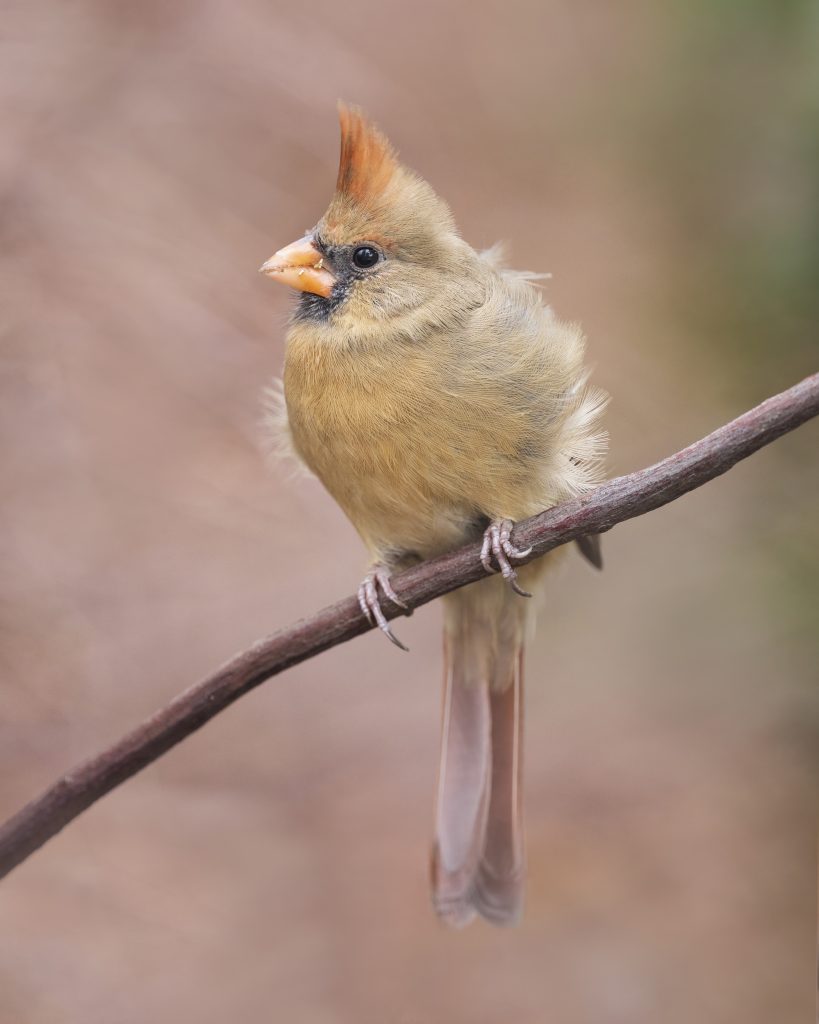It was already late summer when I looked out the window and saw him. The man who lived on my floor. Occasionally we exchanged brief greetings when I ran into him in the hallway, but he always seemed rather aloof.
From my home office, I could see him standing in the park, peering up into a pine tree. Every now and again he would move a few branches to observe something, and then put his hands in his pockets to wait.
My interest peaked. As a wildlife photographer, my first instinct said, ‘bird’. So naturally, I grabbed my camera, put on my shoes and headed downstairs.
He saw me as I approached, eyes widening as if startled.
“Hi…” he said.
“Hey,” I smiled broadly. “Not sure if you know, but I am a wildlife photographer, and I saw you from my window looking into the tree. Did you find something?”
His voice was low, quiet. “Oh. I found a young bird on my balcony a while back,” he explained. “I waited for the mother, but she never came so I took it inside and fed it. I am just trying to release it now.”

“What kind of bird?” I asked.
“Oh, just a sparrow.” He went on to describe how he placed the bird in the tree the day before, but it wouldn’t stay, so he took it back inside his apartment and decided to try again today.
“You live on my floor?” I asked. “My name is Priya.”
“Yes, I am Tarek.” He grinned as if he couldn’t help it, and I watched as he continued to keep an eye on the fledged sparrow in the tree.
“Well, I’ll leave you to it,” I said and went back to work.
A few days later, I ran into Tarek in the hallway and asked about the bird.
“I released him,” he said. “But then he found his way back to my balcony, and when I opened the door, he flew inside.”
“Where is he now?” I asked.
Tariq grinned and paused for a moment, looking at the floor. “He’s inside my apartment.”
My heart warmed at this usually mysterious stranger who lived doors from me.
It was a couple of weeks later when I saw Tarek in the elevator, my first words were about the bird. He explained that the bird was still reluctant to go on its own. And another thing, he said, the bird was female.
“How can you tell?” I asked.
“Because of the colours,” he said.
How could he tell the difference between a male and female house sparrow, I wondered. Maybe I should pay more attention to these common birds that are constantly flying around the park in front of my building.
Days later, on a break from work with my camera in hand, I passed the park, and saw Tarek. A bird was perched on his hand. As I approached, the bird came into focus and I recognized the species.
“Hey,” I said, and Tarek turned with a big grin. “Do you know what that is? It’s not a sparrow.”
His grin widened.
“That’s a female Cardinal,” I said.
And there she was, perched on his hand, chewing on seeds. A woman who lived in the building stopped to take a photo. I put some food into my hand and Tarek brought the bird closer. She perched on my finger, grabbed a peanut and ate it before flying over to a nearby tree.
“Did you name her?” I asked.
He smiled. “Jasmine.”
Sometimes I see Tarek down in the park with Jasmine on his hand. Other times, I’ve seen her on his shoulder in the hallway. She lives in the park, but will often perch at the top of a tree and call for her adopted father when she wants to go inside. She’s been staying outside more and more lately and I suspect she will eventually find a mate and live the life of a wild bird.
But perhaps the bond with the human who saved her life will not waver. My neighbour seems more than willing to comply with her needs – feeding her daily, bringing her inside when she calls for a visit.
In these troubling times as we watch our greenspace turn into concrete, as buildings darken our views, and garbage covers what little we have left, I grab hold of a small bit of hope every time I see Jasmine and the quiet man who saved her life.
